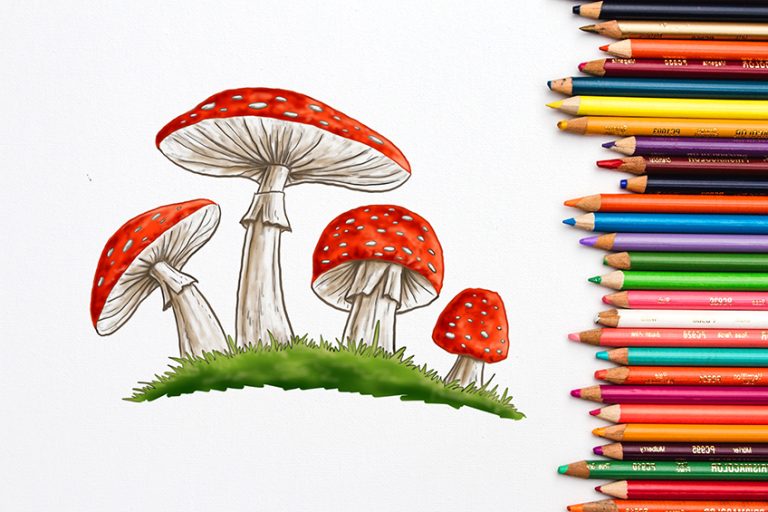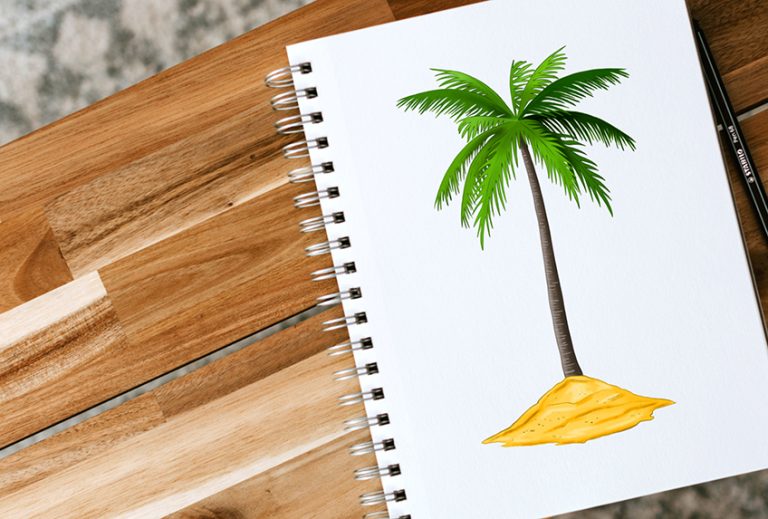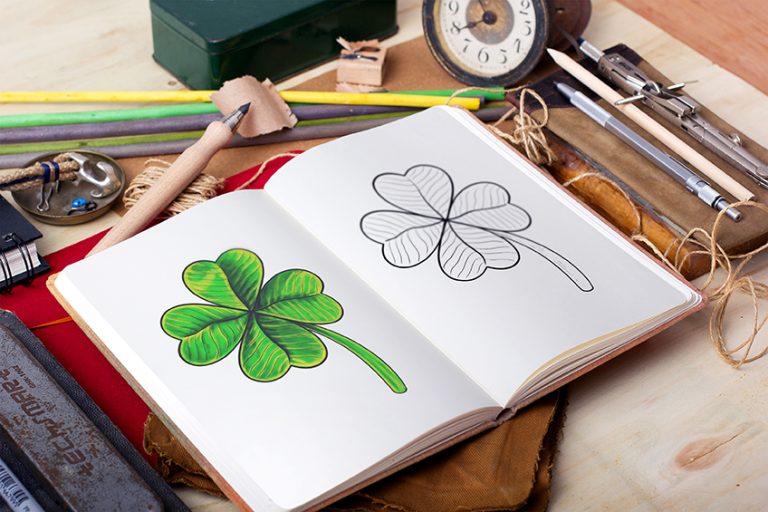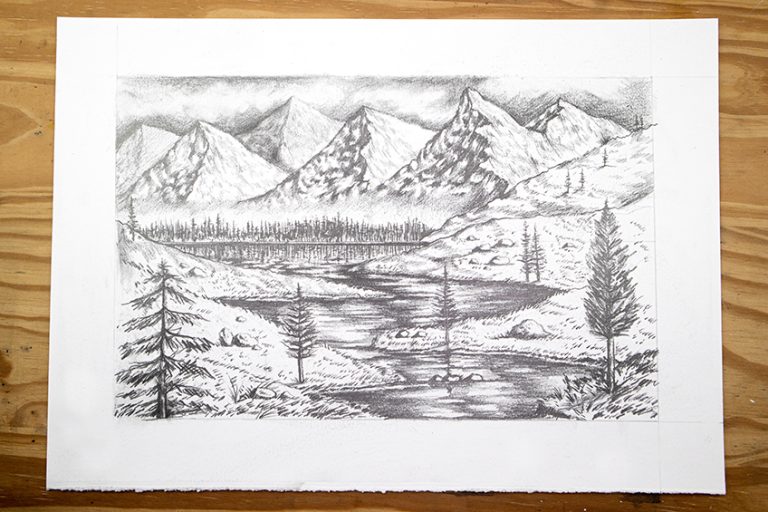How to Draw a Sunset – An Easy Tutorial in 5 Steps
Today we are going to learn how to create a beautiful drawing of the sunset! Sunset drawings are really versatile as they can easily be used as a background setting for many landscapes. A drawing of a sunset also allows us the unique opportunity to explore color variations and how they can be used to give your sky an enriching quality. Sunset drawings are often contextualized by other features as well, allowing us to play around with urban or natural elements as secondary features. It is also a great way to improve your understanding of color and how to build up a naturalistic feature through the process of layering that can be used in a variety of ways for different landscape drawings.
5 Simple Steps to Drawing a Sunset
In this tutorial on how to draw a sunset, we will start by developing a unique combination of various colors. With our drawing of a sunset. we will develop some simple color transitions between warmer and colder colors that set the background of our sunset drawing. We will then slowly build up layers of clouds and work in various tonal values to establish three-dimensionality and depth within the drawing of a sunset. We will then work with a darker foreground where we will see how an urban setting contextualizes the sunset drawing, giving it a unique composition and helping you understand how to create a distinction between the sky and the setting in the foreground.
Step 1: Adding Color to the Background
We want to start by loosely incorporating some color into the page that we would like as a palette for our sunset. The idea is to play around and explore color variations at this point.
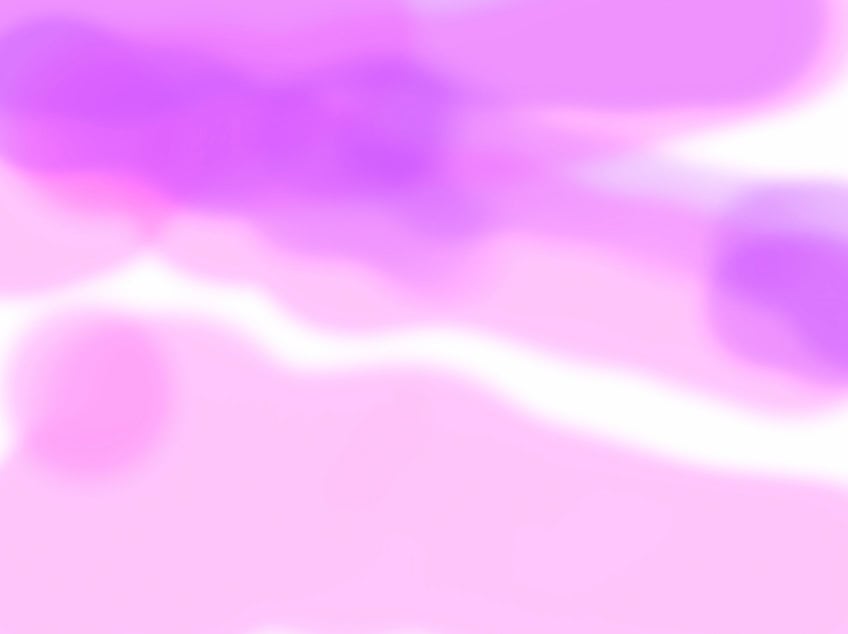
You can keep your mark-making process quite loose at this point, as we intend to set a backdrop over which we will integrate features simply. We do want to start creating a transition between warmer sun-like qualities at the bottom of the page and cooler colors like blues at the top of the page.
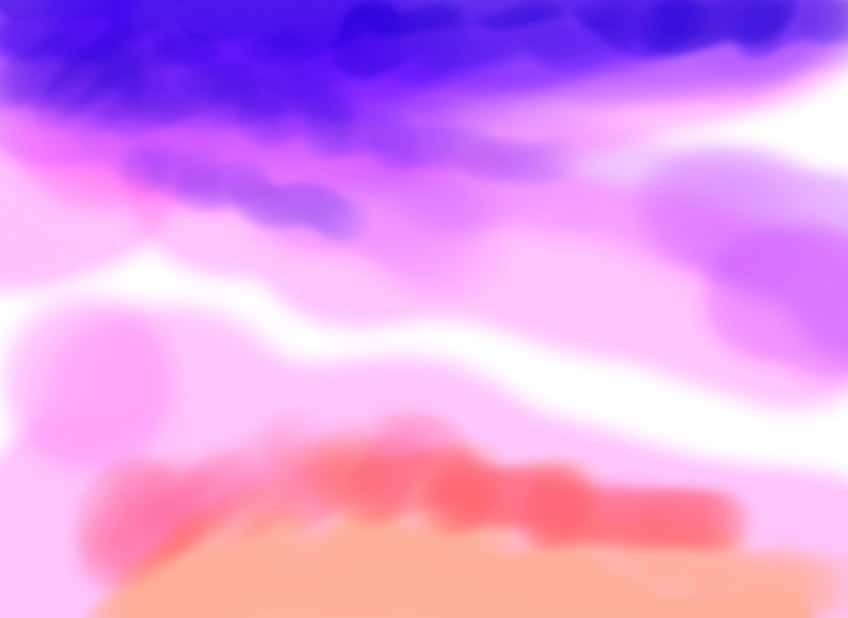
Take your time establishing a transition between the warmer colors and the cooler colors. A good suggestion is to work with pink and red as transitional colors between them.

Step 2: Adding Clouds to the Sunset
This is where we can start to integrate cloud formations into our sunset drawing. We want to create a sense of depth between the top and the bottom of the page. the top of the page will represent the foreground whereas the bottom will represent the background.

With this in mind, we can start to make these loose zig-zag marks that move across the page and get smaller as they shift toward the bottom of the page. This is going to give a sense of distance in the clouds and streak-like quality to them.
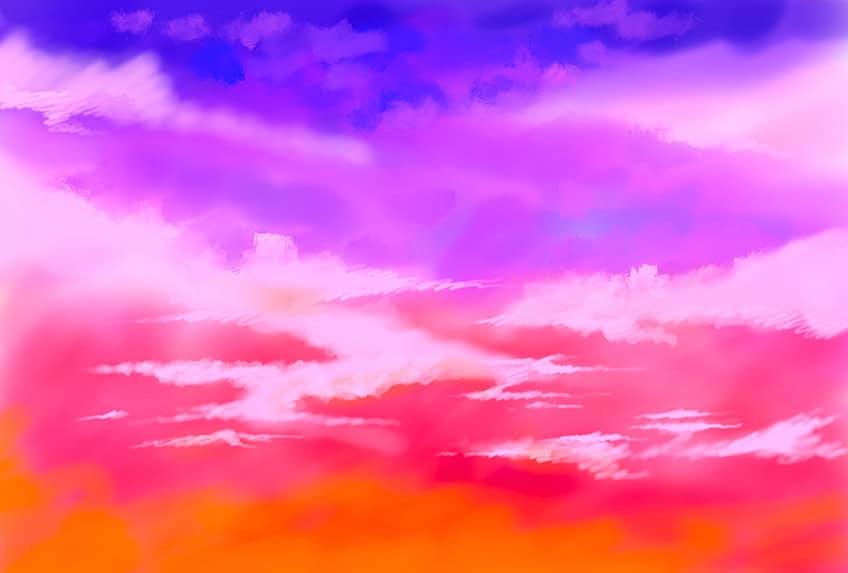
We want to also keep the outline of clouds quite soft, this way they maintain their airy aesthetic. Try making your clouds a lighter color variation to that of the background, this way they remain light but still share a similar color palette to the background.

Continue to integrate these zig-zagging motions of the clouds throughout the sky. As you shift the top of the page you can allow the clouds to move out of the frame to suggest a closeness in the foreground

Step 3: Adding Layers to the Clouds
You can start to integrate some darker tonal; values into the base of the clouds, by doing so we suggest a shadowing beneath their structure. This gives the cloud more dimension and weight, making it more three-dimensional.

As you work your way to the bottom of the page, you can continue to do this for the smaller clouds in the distance. We want to try and work in layers that shift from dark to light within every visible cloud.

That being said, you can also keep some clouds at the top of the page quite soft and faint. This will create distinctions in the clouds, making some appear to be closer and farther within the foreground as well.

As you work your way down the page to the warmer colors near the sun, the clouds can start getting smaller. Another good suggestion is to keep your clouds along a horizontal plane so they remain more realistic in structure.
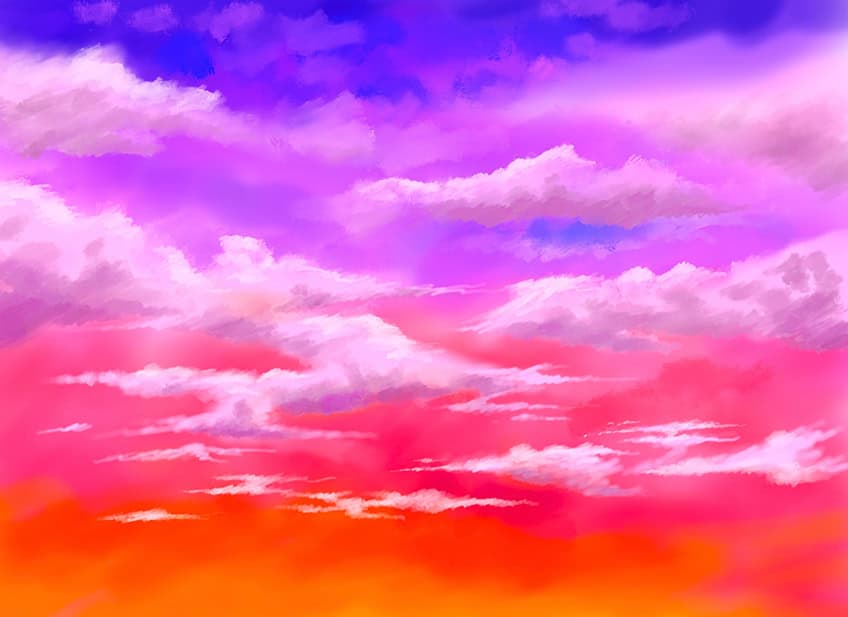
As you proceed closer toward the warmest colors, another good suggestion is to draw your clouds in a similar color to that of the background color. For instance, you can make lighter yellow clouds over the vivid yellow color in the background.

Try to maintain the quality of zig-zagging your cloud formation, as this is a great way to retain the quality of clouds above the vantage point.

Remember, we want to create transitional colors in each of our clouds to suggest three-dimensionality. In doing so, our clouds will have a more realistic quality to them and enrich our sunset drawing.

Step 4: Adding Highlights to the Clouds
Once you have integrated layers into your various clouds, you can then add white highlights along the top of the clouds in the drawing of a sunset. This is going to give your clouds a silver lining, emphasizing their interactions with a light source in a realistic way.

Step 5: Adding an Urban Scene to the Foreground
We can now start to play around with a darker color scheme for the scene within the foreground. By making the elements within the foreground darker, we emphasize the quality of depth in our sunset sketch.

There are many ways to integrate a scene into your sunset drawing, however, in this tutorial we are creating an urban scene through the drawing of some power lines, giving our sunset drawing a more modern aesthetic.
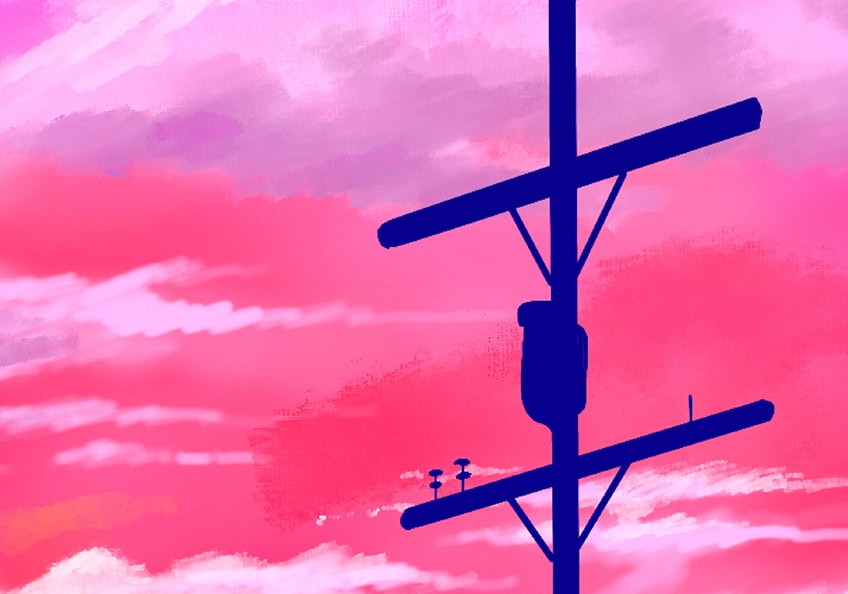
The idea is to build up the scene through the general outlines of features that would exist on a power line. As we add more features to our powerline, we make the setting more interesting in our sunset drawing.

You can play around with what type of foreground setting you would like to create, however, as long as you keep it darker than the bright background, it will result in a realistic representation of a scene.

By slowly adding more features to the powerline, such as cables, signs, and little transformers, we can see how the subject matter starts to become more realistic.

This way of integrating a foreground setting into your sunset drawing, by creating distinct tonal differences, is a great way to create depth within the landscape.

As long as you keep the foreground significantly darker, you will see how it starts to establish distance within the sunset drawing.
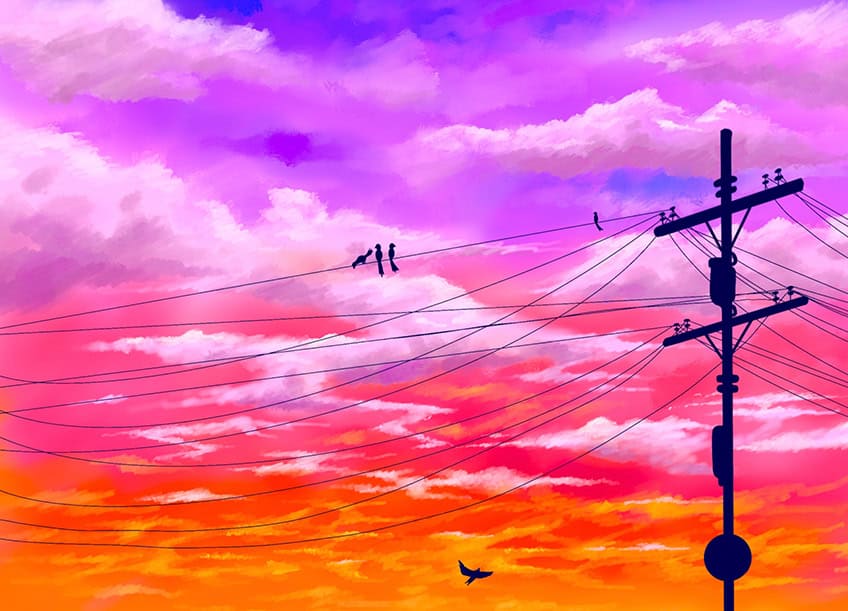
From here on out, you can add more highlights to the clouds in the foreground and background, and add more details to your darkened foreground setting. And that is how to draw a sunset through a few simple steps.
Key Concepts to Consider
- Set the color palette. You want to make sure you have warmer colors at the bottom to define the sun setting at the bottom of the page.
- Add layers to your clouds. Clouds will always be similar to the color of the sky as well, which is why we don’t want them to be just white.
- Add highlights to your clouds. Adding highlights to the top of the clouds creates a realistic silver lining in their structure.
- Consider scale for depth. The closer the clouds, the larger they will seem and the further they are, the smaller they seem.

There are many ways to learn how to draw a sunset, however, clouds play a key role in making the scene interesting. In this easy sunset drawing, we see how cloud formations can be utilized in many ways, and are of great visual quality both aesthetically and also as a means of creating vastness and scale within the sunset sketch.
Frequently Asked Questions
Are Clouds Important for a Sunset Drawing?
In a drawing of a sunset, a larger part of what makes it beautiful are the elements that are present in the sky. In many ways, this requires us to understand how to represent unique features we see in the sky, especially clouds. In this drawing of a sunset, we see how the clouds are used in a way to create depth and distance. Clouds are abstract, giving us a lot of freedom when deciding how to represent them within a painting or drawing. A rule to remember is that clouds are affected by the colors in the sky or make up a large portion of the colors in the sky. This means we can be playful with our color choice. We can also shape clouds in various ways, making the cloud formation in the foreground more distinct in shape and larger in scale. We can also make clouds much softer and smaller as they shift toward the background. Allow yourself to play around with cloud formation and how it affects the scene of your drawing of a sunset.
How Do You Create Depth Within Your Sunset?
You start by creating a transition between the warmer sun-like colors such as oranges, yellows, and reds, and the softer and cooler colors like blues, purples, and pinks. You want to have a transition that shifts from the bottom of the page to the top of the page to suggest a setting sun. From there, the clouds become a strategic feature that you can use to establish depth through scale. The smaller the clouds, the further they will appear, whereas, the larger the clouds, the closer they will appear. As we draw clouds in the foreground, they become more clear and defined. There should be a shift from smaller clouds at the bottom of the page to larger, more distinct clouds at the top of the page. This will give the drawing of a sunset a quality of distance and depth, resulting in a realistic representation of the sky.
Matthew Matthysen is an educated multidisciplinary artist and illustrator. He successfully completed his art degree at the University of Witwatersrand in South Africa, majoring in art history and contemporary drawing. The focus of his thesis was to explore the philosophical implications of the macro and micro-universe on the human experience. Matthew uses diverse media, such as written and hands-on components, to explore various approaches that are on the border between philosophy and science.
Matthew organized various exhibitions before and during his years as a student and is still passionate about doing so today. He currently works as a freelance artist and writer in various fields. He also has a permanent position at a renowned online gallery (ArtGazette) where he produces various works on commission. As a freelance artist, he creates several series and successfully sells them to galleries and collectors. He loves to use his work and skills in various fields of interest.
Matthew has been creating drawing and painting tutorials since the relaunch in 2020. Through his involvement with artincontext.org, he has been able to deepen his knowledge of various painting mediums. For example, watercolor techniques, calligraphy and lately digital drawing, which is becoming more and more popular.
Learn more about Matthew Matthysen and the Art in Context Team.
Cite this Article
Matthew, Matthysen, “How to Draw a Sunset – An Easy Tutorial in 5 Steps.” Art in Context. August 10, 2024. URL: https://artincontext.org/how-to-draw-a-sunset/
Matthysen, M. (2024, 10 August). How to Draw a Sunset – An Easy Tutorial in 5 Steps. Art in Context. https://artincontext.org/how-to-draw-a-sunset/
Matthysen, Matthew. “How to Draw a Sunset – An Easy Tutorial in 5 Steps.” Art in Context, August 10, 2024. https://artincontext.org/how-to-draw-a-sunset/.




